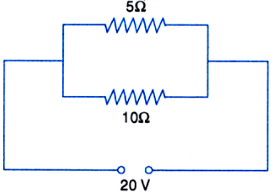Case Based Questions Test: Electricity - 2 - Class 10 MCQ
15 Questions MCQ Test - Case Based Questions Test: Electricity - 2
Find out the following in the electric circuit given in the figure. Answer the questions:
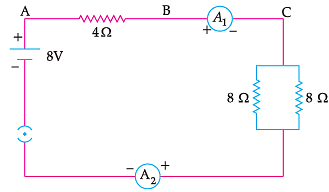
Effective resistance of two 8 Ω resistors in the combination.

Find out the following in the electric circuit given in the figure. Answer the questions:
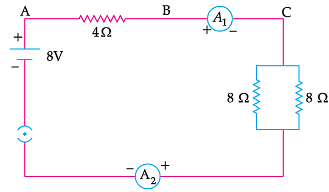
Power dissipated in 4 Ω resistor

| 1 Crore+ students have signed up on EduRev. Have you? Download the App |
Find out the following in the electric circuit given in the figure. Answer the questions:
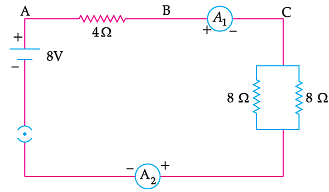
Current flowing through a 4 Ω resistor.

Find out the following in the electric circuit given in the figure. Answer the questions:
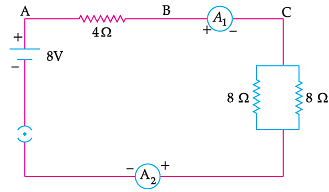
Difference in reading of ammeter A1 and A2
Find out the following in the electric circuit given in the figure. Answer the questions:
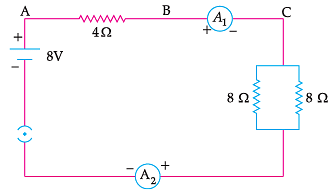
Potential difference across 4 Ω resistor
Two conductors A and B of resistances 5 Ω and 10 Ω respectively are first joined in parallel and then in series. In each case the voltage applied is 20 V. Answer the questions:
In which arrangement will the current through A and B be the same ?
Two conductors A and B of resistances 5 Ω and 10 Ω respectively are first joined in parallel and then in series. In each case the voltage applied is 20 V. Answer the questions:
Draw the circuit diagram to show connection when A and B are joined in parallel?
Two conductors A and B of resistances 5 Ω and 10 Ω respectively are first joined in parallel and then in series. In each case the voltage applied is 20 V. Answer the questions:
Equivalent resistance in series combination is:
Two conductors A and B of resistances 5 Ω and 10 Ω respectively are first joined in parallel and then in series. In each case the voltage applied is 20 V. Answer the questions:
Equivalent resistance in parallel combination is:
Two conductors A and B of resistances 5 Ω and 10 Ω respectively are first joined in parallel and then in series. In each case the voltage applied is 20 V. Answer the questions:
Q. In which combination will the voltage across the conductors A and B be the same ?
Study the circuit shown in which three identical bulbs B1, B2 and B3 are connected in parallel with a battery of 4.5 V. Answer the questions:
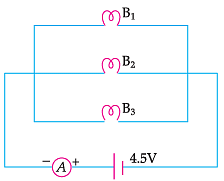
Q. What will happen to the other two bulbs if the bulb B3 gets fused ?
Study the circuit shown in which three identical bulbs B1, B2 and B3 are connected in parallel with a battery of 4.5 V. Answer the questions:
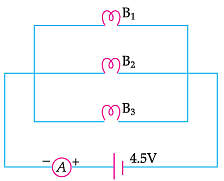
How many resistors of 88 W are connected in parallel to carry 10 A current on a 220 V line:
Study the circuit shown in which three identical bulbs B1, B2 and B3 are connected in parallel with a battery of 4.5 V. Answer the questions:

If the wattage of each bulb is 1.5 W, how much readings will the ammeter A show when all the three bulbs glow simultaneously.
Study the circuit shown in which three identical bulbs B1, B2 and B3 are connected in parallel with a battery of 4.5 V. Answer the questions:
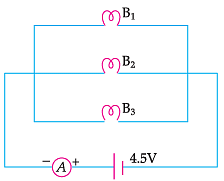
Find the statement which does not justify parallel connection:
Study the circuit shown in which three identical bulbs B1, B2 and B3 are connected in parallel with a battery of 4.5 V. Answer the questions:
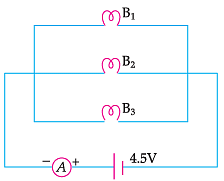
Find the total resistance of the circuit:


